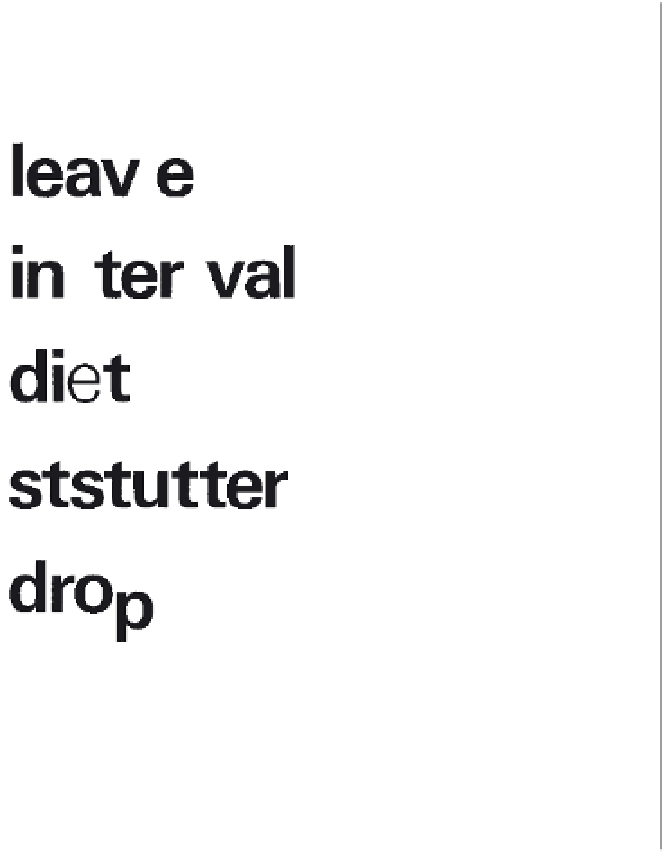Graphics Reference
In-Depth Information
In language, signs are joined together to create messages. Words
as verbal signs, grouped together in a linear fashion, attain their value
vis-à-vis other words through opposition and contrast. Words can also
evoke meaning through mental association. These associative relations
are semantically derived. Since typography is both visual and verbal,
it operates in a linear fashion, with words following each other in a
specific sequence, or in a nonlinear manner, with elements existing
in many syntactic combinations. For example, in the visual poem
“O Christmas Tree,” the choice of the typeface, Futura Light, is very
important. The capital letter
O
is a perfect circle, signifying ornaments;
the linear strokes of other letterforms suggest the texture of evergreen
needles (Fig.
6 -11
). This typographic message is derived from the
mental associations formed by contrasting typographic signs.
Two terms important to the understanding of signs are denotation
and connotation. When considering the meaning of typographic signs,
denotation refers to objective meaning, the factual world of collective
awareness and experience. For example, a denotative interpretation of
a yellow
O
would be: “This is a yellow letter
O”
or “This is a yellow
circle.” Connotative interpretations of the yellow
O
might be: “This is
the sun, a slice of lemon, or a golden ring.” Connotative observations
are often conditioned, for they relate to overtones and are drawn from
prior personal experience.
Typographic signs are both verbal and visual. The associations
formed between the verbal and visual attributes are verbal/visual
equivalencies, which are found in a variety of configurations. These
reveal the associative nature of signs composing the typographic
message and help us further understand its multifaceted attributes.
Figures
6-12 to 6-24
illustrate the nature of some of these verbal/
visual equations.
6-9
Syntactic manipulations are
controlled by such factors as repetition,
size change, position change, or weight
change. These enable words to visually
mimic verbal meaning.
6 -11
Typographic signs combine to
form a more complex sign, suggesting
a decorated Christmas tree. (Designer:
Donna Funk)
6-10
These elaborations
of the letter
E
express
a variety of concepts.
(Designers: Carol
Anthony, Linda
Dronenburg, and
Rebecca Sponga)
to scrape
to crease
to peel
to melt
to splinter






